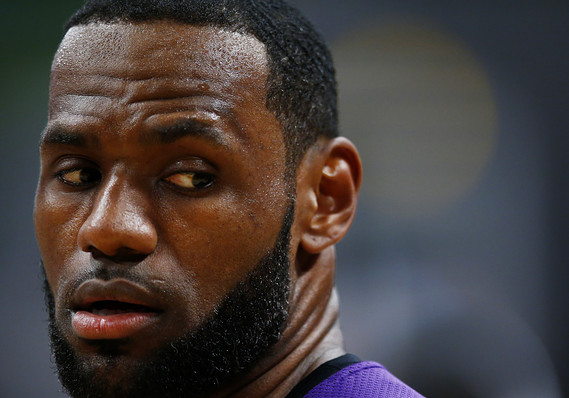Team sports can play a role in helping teens get past traumatic childhoods.
That’s according to a study released Tuesday by the University of California, Los Angeles. Researchers said men and women who played team sports — from basketball to cheerleading — had lower diagnosis rates for anxiety and depression, and better mental health.
Involvement could give players critical social support and boost their resilience after “adverse childhood experiences” like abuse, neglect, parental incarceration, the report said. Exercise also activates dopamine, a hormone and neurotransmitter that can help combat depression.
• 16.8% of adolescent team sports participants were diagnosed with depression as adults, compared to the 22% who did not play in team sports.
• 11.8% of adolescent team players wound up with anxiety diagnoses, versus 16.8% of non-players.
The study comes at a time when organized sports are slipping out of reach for low-income families, between the costs of gear, uniforms, league fees and travel — and the time investment for dual-income families.
Roughly half of the 10,000 participants reported having bad childhoods; of those, 56% or 2,720 said they played adolescent team sports. The study participants who took team sports reported higher levels of self esteem, social support, and feeling more connected to their environment.
“There’s something about the social environment of the team that provides support,” said lead author Dr. Molly Easterlin, a pediatrician and a health services research fellow in the UCLA National Clinician Scholars Program and the Cedars-Sinai Medical Center.
She has first-hand experience of team sports: Easterlin told MarketWatch that she played varsity soccer player during her college years.
The UCLA study’s conclusions come at a time when organized sports are slipping out of reach for low-income families, between the costs of gear, uniforms, league fees and travel — not to mention the time investment for parents who might have demanding work schedules with multiple jobs or irregular work hours.
Inactivity rates for households making less than $50,000 a year have been on the rise in recent years, said the Sports & Fitness Industry Association. “The lower the income, the more likely it was to be an inactive household,” the trade organization wrote in a report released earlier this year.
Compared to past generations, teens also have more pursuits vying for their attention, including Snapchat SNAP, +0.00% Twitter TWTR, -0.16% and Facebook FB, +1.28% Some studies link social media to depression, though many teens — at least in one survey — said sites like Twitter and Instagram connect them to friends.
 Photo by Yong Teck Lim/Getty Images
Photo by Yong Teck Lim/Getty Images
Sports also help steer at-risk teens away from trouble on the streets, keeping them away from people and places that could be a bad influence, other research suggests. Bottom line: Team sports also provide discipline, camaraderie and a sense of belonging.
Team sports provide discipline, camaraderie and a sense of belonging. They also help steer at-risk teens and away from trouble on the streets, other research suggests.
Many professional athletes have risen past childhood adversity to find sports fame. Start with LeBron James, the L.A. Lakers’ forward who’s arguably one of the NBA’s all-time greats.
The 34-year-old nicknamed “The Chosen One” was raised by his mother, but his father was incarcerated and he was constantly on the move. James points to fourth grade as his pivotal year. That’s when, among other things, he started playing football in a recreational league.
Of course, the UCLA study points to correlation rather than causation. The research — which surveyed study participants first as teens and then as adults — didn’t say sports caused the lower diagnosis rates; it noted there were all sorts of factors influencing a teen’s mental health. In fact, the stress from team commitments might not be for everyone, the study acknowledged.
But it’s another nod to the fact sports are more than a game for some. A 2015 Ernst & Young study noted many women in the C-Suite played sports as girls.
“For companies and countries that are serious about wanting to advance more women into leadership roles, you can’t underestimate the role of sport in closing the gender gap,” said Beth Brooke-Marciniak, EY’s global vice chair, public policy.
The UCLA study, meanwhile, noted tightening school sports budgets and rising costs to play might shut out the kids who need team sports the most. “Policy makers and child-health advocates may consider advocating to make these programs accessible, equitable, and strong,” the researchers wrote.










Add Comment